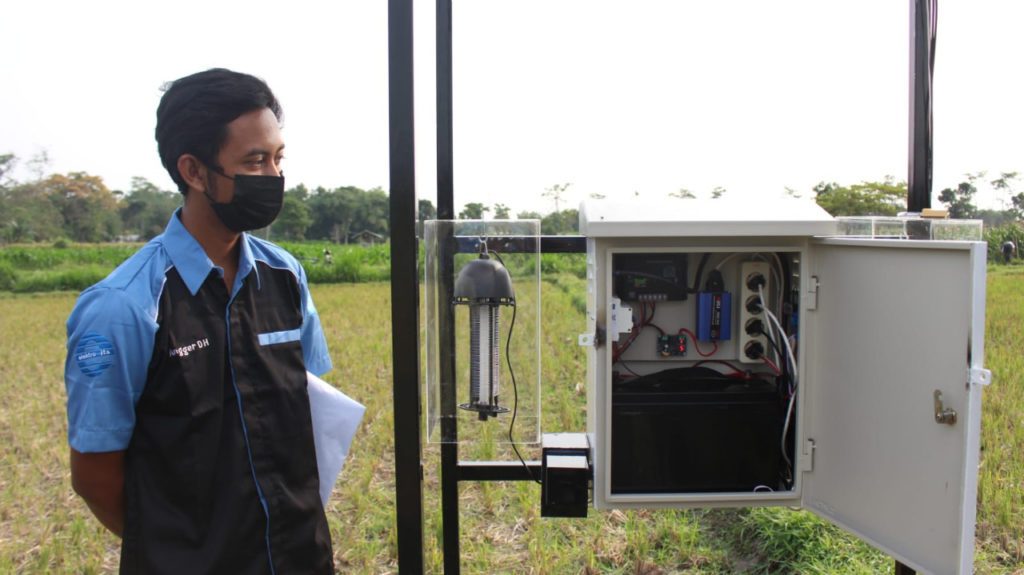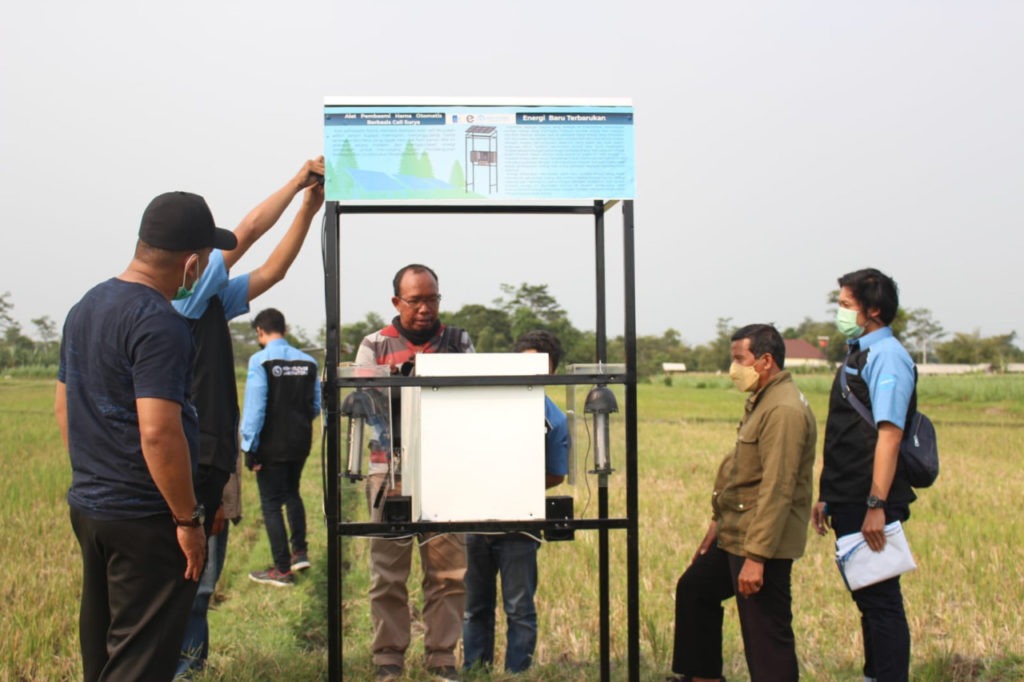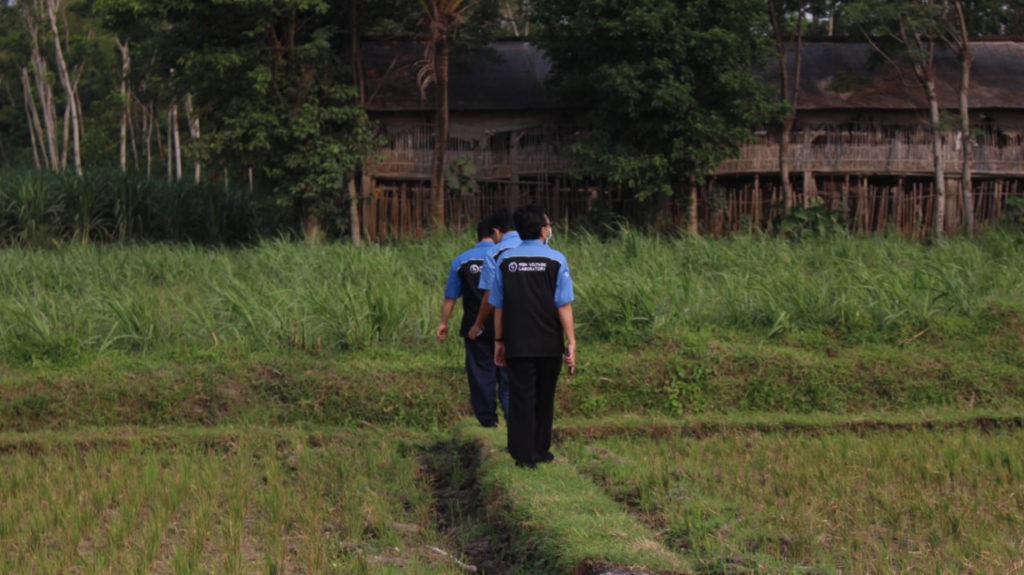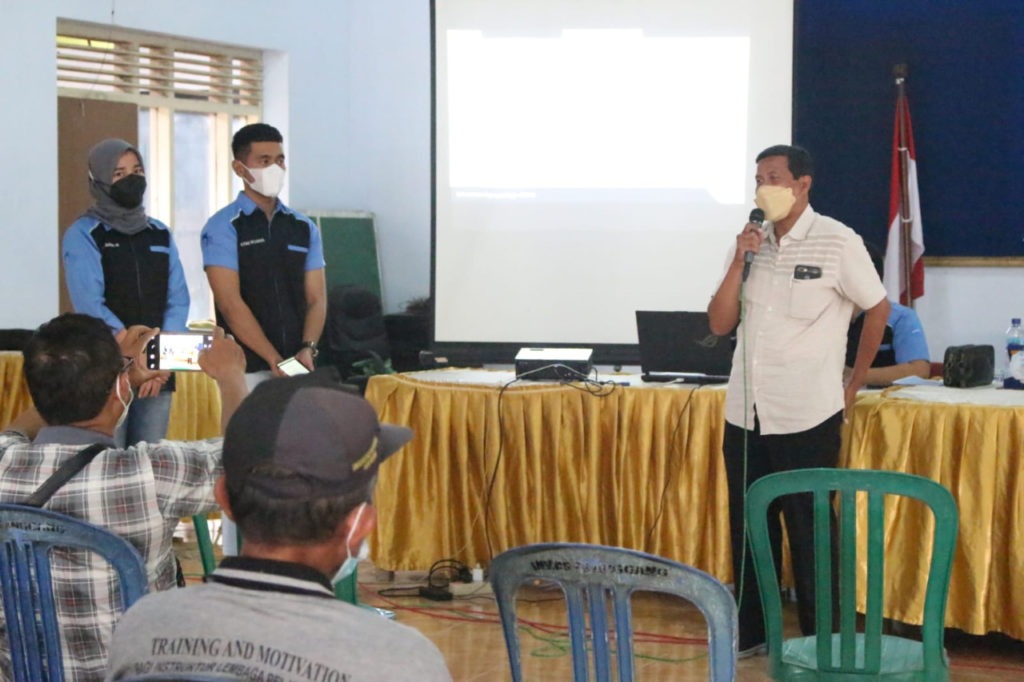Repel Pests, ITS Abmas KKN Team Designs Solar Cell Based Tools

Angger Dzaky Hanif, a member of the ITS KKN Abmas team, shows a solar cell-based automatic pest control device designed by his team.
ITS Campus, ITS News – The rise of pest attacks resulted in a decrease in agricultural production and made farmers suffer many losses, one of which was in Pranggang Village, Plosoklaten, Kediri. Starting from this problem, a team of lecturers and students from the Department of Electrical Engineering, Institut Teknologi Sepuluh Nopember (ITS), who are members of the Real Work and Community Service (KKN Abmas) team, developed an automatic pest control device based on solar cells or solar power.
Angger Dzaky Hanif, one of the students who joined the team, revealed that pesticides are no longer the right solution to control pests. Apart from having the potential to increase pest populations, pesticides also need to be suppressed for a stable ecosystem. “For that, we tried to make a tool that is environmentally friendly and useful in improving the quality of the harvest,” said Angger.

The ITS Abmas KKN team together with several villagers when operating the innovation tool
Unlike other tools whose generators come from coal and diesel, continued Angger, this tool is a renewable energy system that can supply clean energy. For this reason, this tool will not produce carbon dioxide gas in the process. “In addition, this tool consists of a light sensor, electric net, mouse repellent, and solar panels as an environmentally friendly energy source,” he explained.
The solar panels, he continued, were obtained from the conversion of solar energy into electrical energy. At the same time, the light sensor system is used so that the tool can continue to work automatically at night. Unlike the pest exterminators on the market, this tool uses an electric net equipped with a combination of ultraviolet (UV) light and ultrasonic waves that can reduce pests without damaging the ecosystem.

The ITS Abmas KKN team when conducting a survey of activities at village locations
UV light attracts insects and pests to the net and dies when they touch it. At the same time, ultrasonic waves are used to detect and repel mice in a radius of 120 meters. “Overall, this tool has dimensions of 100 cm x 60 cm x 240 cm,” detailed the student who was born in Kediri, July 20, 2000.
Regarding safety, Angger and his team have prepared it from the start by coating the electric net with an acrylic protector. So, even if they are exposed to rain and touched by residents, they will not be electrocuted. “In addition, we also added a net to secure the device from the reach of children,” he explained.
Lasting for three months since last July, the ITS KKN Abmas team finally succeeded in making three pest control tools donated and distributed to several points that the village had determined. “Long before designing the tool, of course, we need to conduct a survey first by visiting partners to consult and ask for approval,” he said.

Tool socialization by the ITS KKN Abmas team to residents of Pranggang Village, Plosoklaten, Kediri
Based on Angger’s statement, the residents of Pranggang Village positively welcomed the presence of the tool. They hope that the device can continue to work well and be relocated so that other farmers can feel the benefits. “This tool also provides good news for rice farmers there who had changed professions to become koi farmers because they were overwhelmed with dealing with pests,” he added.
Consisting of three lecturers and 16 students, this activity occurred in a hybrid manner considering the high number of Covid-19 cases. In the future, Angger hopes that this tool will continue to be used and the benefits can be felt alternately, considering that this tool is designed to be portable. “We also hope that the tools we have developed are well maintained by the farmers there,” he concluded. (ITS Public Relation)
Reporter: Erchi Ad’ha Loyensya
Related News
-
ITS Collaboration with BPBD East Java, Launching VR Disaster Simulation
ITS Campus, ITS News — Supporting anticipation of disasters and continuing to educate the public, Institut Teknologi Sepuluh Nopember
November 17, 2021 18:11 -
Supporting the Implementation of Innovative Ideas, ITS and IYSA Hold International Competition
ITS Campus, ITS News — Institut Teknologi Sepuluh Nopember (ITS) has once again proven its commitment to supporting the
November 17, 2021 18:11 -
ITS Maintains Informative Qualification for Five Consecutive Years at KIP Awards
ITS Campus, ITS News — Institut Teknologi Sepuluh Nopember (ITS) has once again successfully maintained its Informative Qualification predicate
November 17, 2021 18:11 -
ITS Strengthens Smart Eco-Campus through UI GreenMetric 2024
ITS Campus, ITS News — Institut Teknologi Sepuluh Nopember (ITS) has once again demonstrated its commitment to environmental concern
November 17, 2021 18:11
